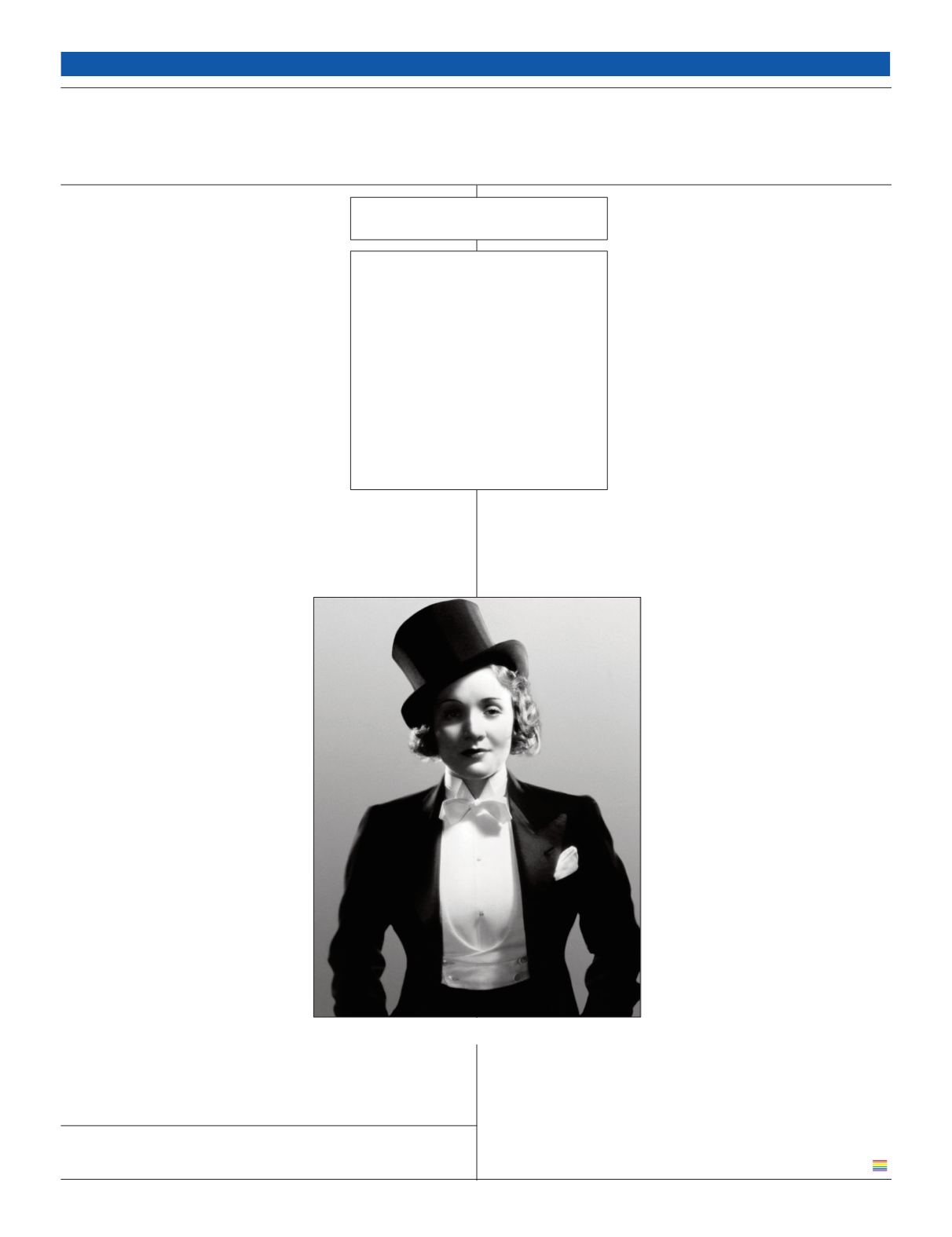
F
RED DENNIS, senior curator of
costumes at the Fashion Institute of
Technology, originated the idea of
looking at the fashion industry
through a queer lens to establish the central-
ity of gay creativity to the fashion industry
since the 19th century. The result is an exhi-
bition that sets out to document the contri-
bution of gay men and lesbians to fashion
over this nearly two-century time frame,
both in their capacity as fashion designers
and as trend-setters who wore designs that
were avant-garde for their time.
Garments designed by Dior, Yves Saint
Laurent, Halston, Alexander McQueen,
and Jean Paul Gaultier are high art. These
designs are living embodiments of their theories about bodies
interacting with one another in society and culture. These de-
signers are justly celebrated for their ability to capture and
break gender conformity for men and women. How they were
able to move forward is a measure of their creativity. To fig-
ure out what these artists were up to
conceptually, one has to go behind
the superficial glitz of the commer-
cial fashion scene that is the stage on
which they strutted their stuff.
The range of these designers runs
the gamut from cartoonish satires to
top hats and men in leather and lace
skirts. These are postcards from the
edge, embodying a variety of people
from varying classes of society, but
mostly those with the wealth or
savoir-faire to adopt the high style of
the day. As for the designers of these
fashions, at a symposium held in
conjunction with the show, Fran
Lebowitz, dressed in her signature
designer jacket tailored by Anderson
and Sheppard, was asked by co-cu-
rator Valerie Steele why so many
GLBT people went into the fashion
industry. “Because they had nowhere
else to go,” she replied. “Straights
could go anywhere but gays were
strictly limited.”
Regarding fashion through the template of the contempo-
raneous fashion experience enables us to comprehend just
how complex an art form it is. The stylists of these sensations,
of these movements, are boldly creating
experiments designed for living so that all
social interactions become theatrical and
performative. Few people understood this
as well as those men whom Pierre Bal-
main described as having girlish interests
in dresses, who went on to create the so-
phisticated, fey, and funny fashions that
can be found throughout this exhibit, such
as Pierre Balmain’s iconic riding costume
for Jean Cocteau’s 1947 play,
L’Aigle à
Deux Têtes
.
The accompanying book for the exhi-
bition is beautifully produced by Yale
University Press, but it doesn’t generate
the excitement of the exhibition itself. In
248 pages, amply illustrated and featuring seven essays, the
book covers a history of
couture
ranging from Beau Brum-
mell to dandyism, on up to contemporary lesbian chic and ac-
tivist T-shirts. Of singular note are Elizabeth Wilson and Vicki
Karaminas’s contributions for their off-the-cuff concepts of
what a lesbian looks like and how
lesbian style has evolved since the
1980s. These had me rushing to the
mirror to check myself out to see if
I still qualified as a lesbian! Read-
ing their post-modern, ahistorical
analysis left me largely clueless. I
was grateful for Joyce Culver’s
wonderfully reaffirming and sexy
photograph of a hot young lesbian in
a gay pride parade wearing slicked
down sideburns, a leather cap, and
black bra.
The major problem with these es-
says is that few if any references are
made to fashion foremothers such as
La Garçonne or Romaine Brooks’
Sapphic portrayals of women. In-
stead, these writers reinvent the
wheel, beginning with lipstick les-
bians, cross-dressers, and drag kings,
as if we had no historic ground to
stand upon. Providing a foundation
as Valerie Steele did in her opening
essay would have helped readers comprehend the bedrock for
these newly fashioned lesbianisms. The book closes with a
well-written and amusing autobiographical account of queer
activist fashion by Jonathan D. Katz. If the show had a some-
what unfinished quality, this is perhaps because fashion itself
is always unfinished, both a product and a shaper of cultural
change.
Who Made Those Fabulous Duds?
C
ASSANDRA
L
ANGER
A Queer History of Fashion:
From the Closet to the Catwalk
Exhibition: The Museum at FIT
(Fashion Institute of Technology)
Curated by Fred Dennis
and Valerie Steele
A Queer History of Fashion:
From the Closet to the Catwalk
Edited by Valerie Steele
Yale. 248 pages, $50.
Cassandra Langer, a freelance writer based in New York City, is a fre-
quent contributor to these pages.
48
The Gay & Lesbian Review
/
WORLDWIDE
EXHIBITION
Marlene Dietrich in men’s formal attire in the 1930s


